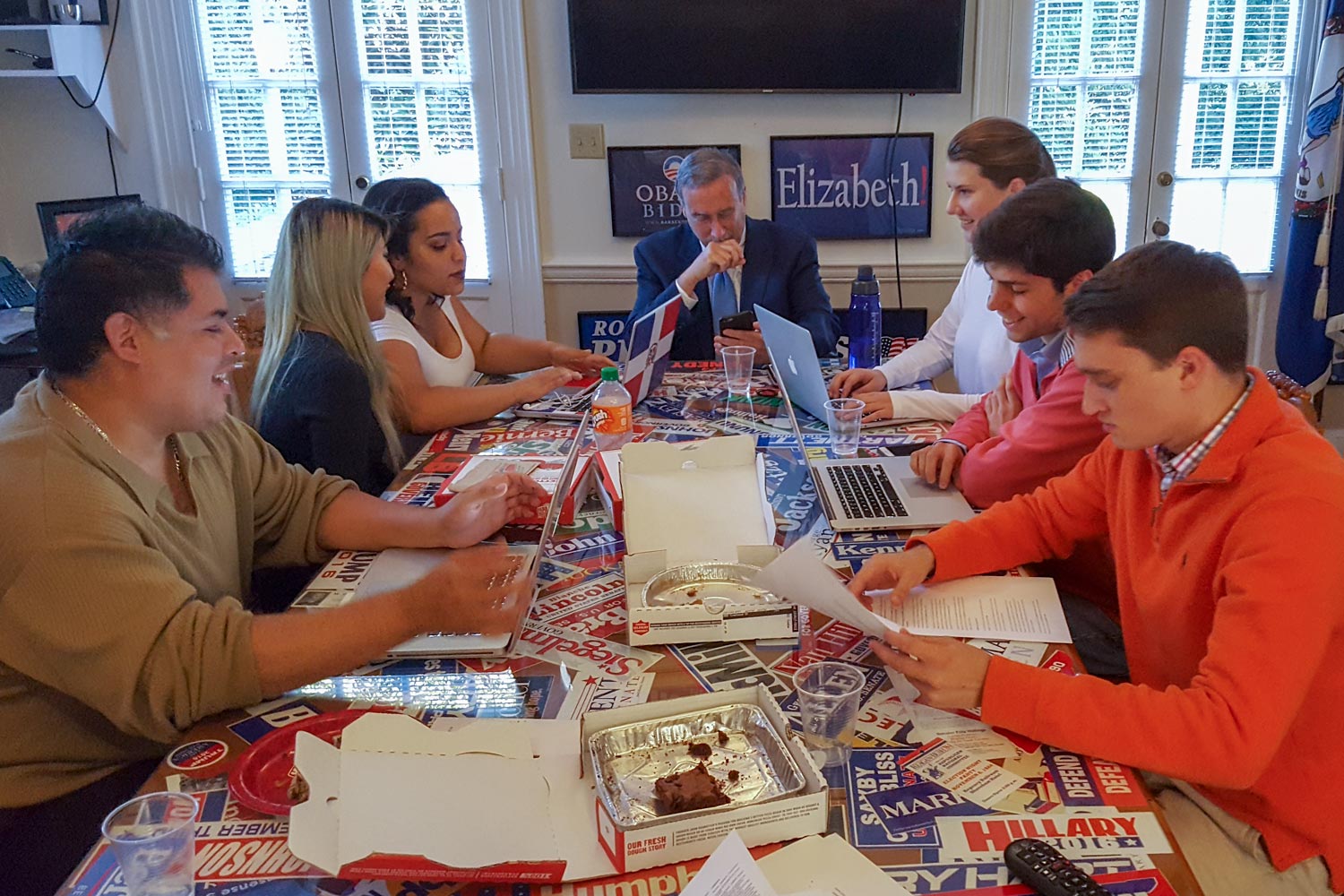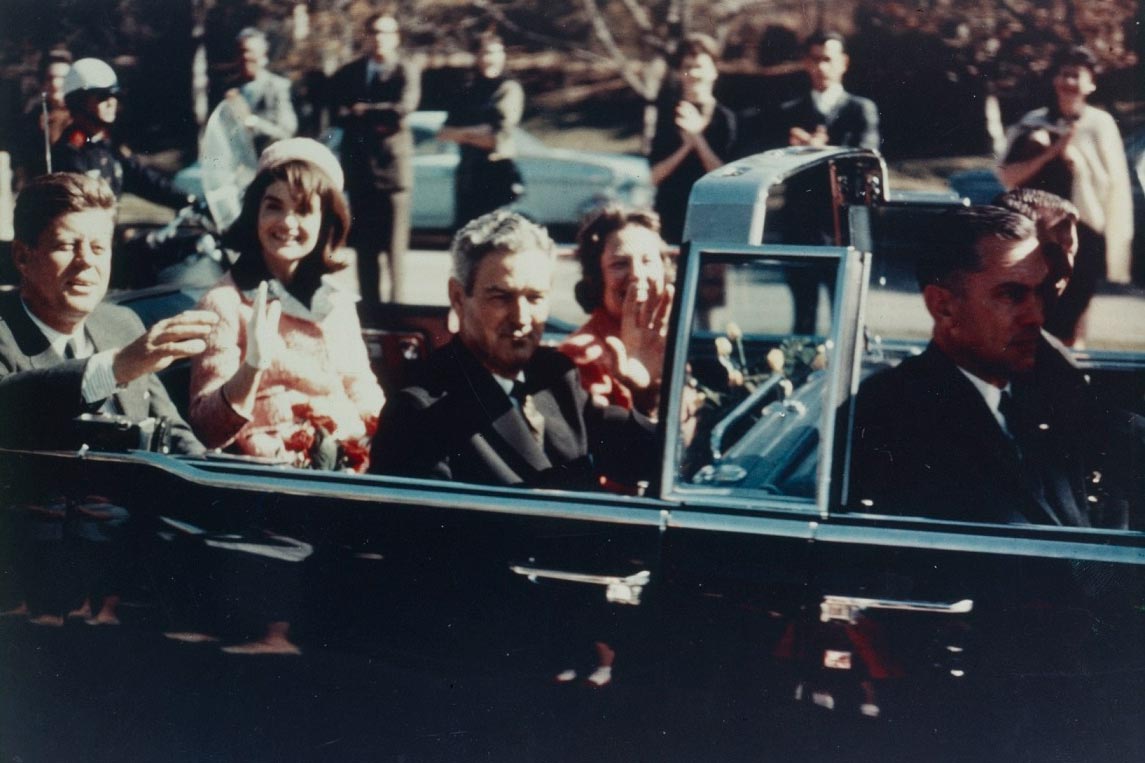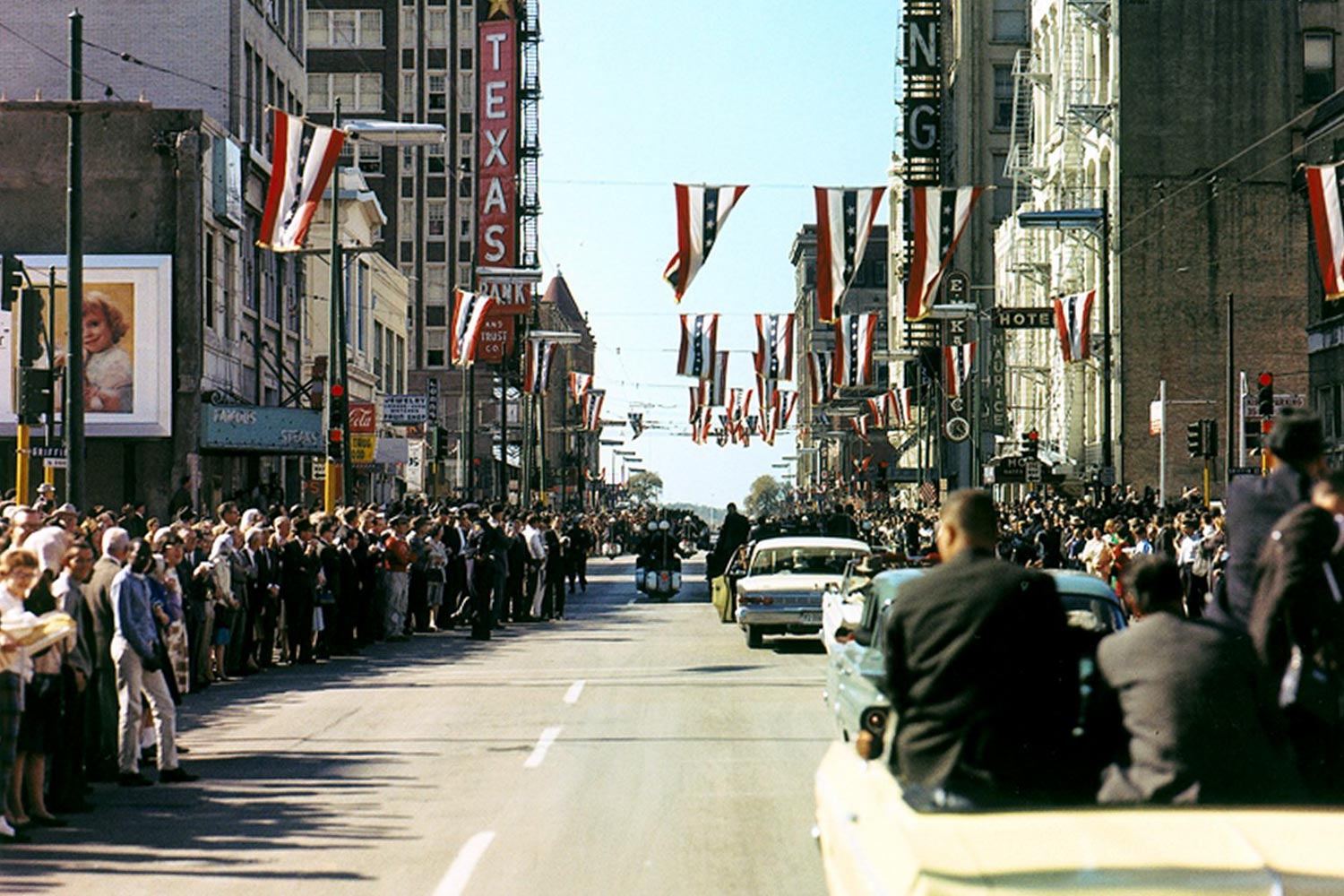Thursday night, the federal government released more than 2,800 previously classified files related to President John F. Kennedy’s assassination on Nov. 22, 1963. Students at the University of Virginia’s Center of Politics, along with scholars across the country, immediately got to work.
Led by Center of Politics Director Larry J. Sabato and his staff – and fueled by pizza and brownies – about 30 students are meticulously combing through the highly anticipated files, which were posted online at 7:33 p.m. Thursday by the National Archives and Records Administration.
The work continued Friday morning at the Center for Politics, where students were perched at tables and on couches, focusing intensely on their computer screens and occasionally shouting out an interesting discovery.

Fueled by pizza and brownies, Larry Sabato and his students pored over the newly released records well into the night. (Photo courtesy of UVA Center for Politics)
Thanks in part to their dedication, Sabato – whose class and book, “The Kennedy Half-Century,” explores the assassinated president’s impact on modern politics – was able to provide rapid feedback to national media outlets like the New York Times, where reporters were clamoring for a story as quickly as possible.
“They have done a remarkable job,” he said of his students. “You give them a task, and they just exceed your expectations. It’s marvelous, and you know instinctively that they will do great in life.”
Still, he emphasized there is a lot of work to be done before the new documents can be fully understood.
“These documents are starting points, not ending points,” Sabato said. “Right now, we have barely skimmed the surface.”
A 1992 law required the government to release the classified documents on the assassination in 25 years, a period that expired Thursday. Most of the documents were released as scheduled; however, President Trump, citing national security concerns, issued a last-minute order to withhold about 300 files for at least an additional six months and ordered an administrative review of their contents.
In the meantime, there was plenty of new information to keep Sabato and his team busy.
On Friday, fourth-year engineering student Mary Beth Greer, who is currently enrolled in Sabato’s “Kennedy Half-Century” class, was scrolling through a 400-page list of documented threats on President Kennedy’s life – most of them idle, but ominous nonetheless.
“We are looking for anything that stands out, any new threats that we have not heard about,” Greer said. “It will be great to find connections between the documents, and hopefully build on what we already know.”
Her classmate, fourth-year politics student Cathreen Bergaust, said she was enjoying taking a deeper dive into Kennedy’s life and legacy, going beyond the rosy “Camelot” image popular in the media.
“It is really exciting to be a part of this,” she said.

Kennedy’s assassination in Dallas continues to intrigue scholars and fuel a tremendous range of conspiracy theories. (Photo from the National Archives)
Though Sabato emphasized that it is too early to draw definite conclusions, he will continue to share updates on Twitter and did provide a few key takeaways that have intrigued him and his students so far:
- A mysterious telephone call in the United Kingdom: At 12:05 p.m. Central Standard Time on the day Kennedy was killed, a reporter in Cambridge received an anonymous telephone call urging him to contact the American embassy because there would be big news out of America. Kennedy was killed 25 minutes later. “I had heard rumors about that call, but did not have many details,” Sabato said.
- “El Mexicano”: A CIA document in the release alleges that “El Mexicano” – believed to be Cuban rebel leader Francisco Rodriguez Tamayo – accompanied assassin Lee Harvey Oswald on a Sept. 1963 trip to Mexico City, where he visited Cuban and Soviet embassies. That trip has long been a point of contention among those who believe that Oswald had ties to Cuban or Soviet operatives or to other foreign governments.
- Continued investigations in Mexico: Documents revealed Mexico’s close cooperation with the U.S. government before and after the assassination, including wiretaps of the Soviet and Cuban embassies and attempts to trace Oswald’s financial and personal connections in the country.
- New details of “Operation Mongoose”: “Operation Mongoose,” the code name for a covert operation to remove Communists in power in Cuba, has long been known. However, Sabato said that new documents outlined one plot he had not heard of: a plan by senior White House aides to use biological agents to kill food crops in Cuba and spark a popular revolution. “To the best of our knowledge, it was never carried out,” he said.
Despite the avalanche of information, Sabato, his staff and the students have not yet uncovered the bombshells that many Kennedy conspiracy theorists were hoping to find. Sabato said he would be surprised if the documents overturned the major conclusions of the Warren Commission, which reported in 1964 that Oswald was the sole assassin. They could, however, add some new context.
“While I think Oswald was the lone shooter in Dealey Plaza, he could have had help or encouragement, or could have told someone in advance,” he said.
Whatever the revelations to come, Sabato was thrilled that his students could play a role in Thursday’s historic release, and he hopes the experience will stick with them.
“They have told me that they feel like they are a part of history,” he said. “That is what we want to provide for them. We want them to remember this for the rest of their lives.”
Media Contact
Article Information
October 27, 2017
/content/history-action-center-politics-students-hard-work-reviewing-jfk-files

